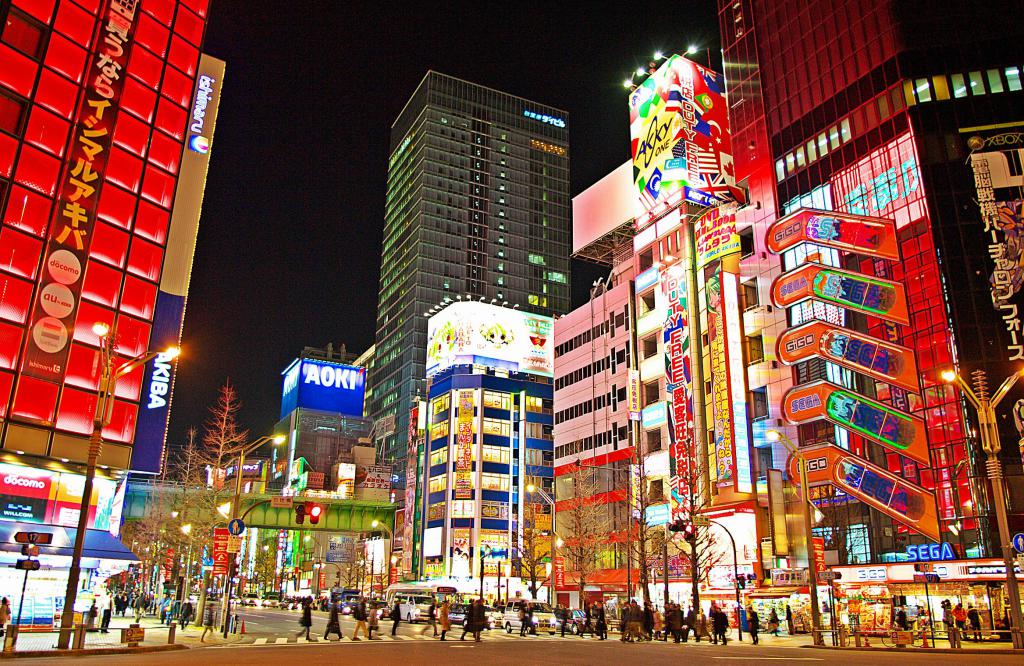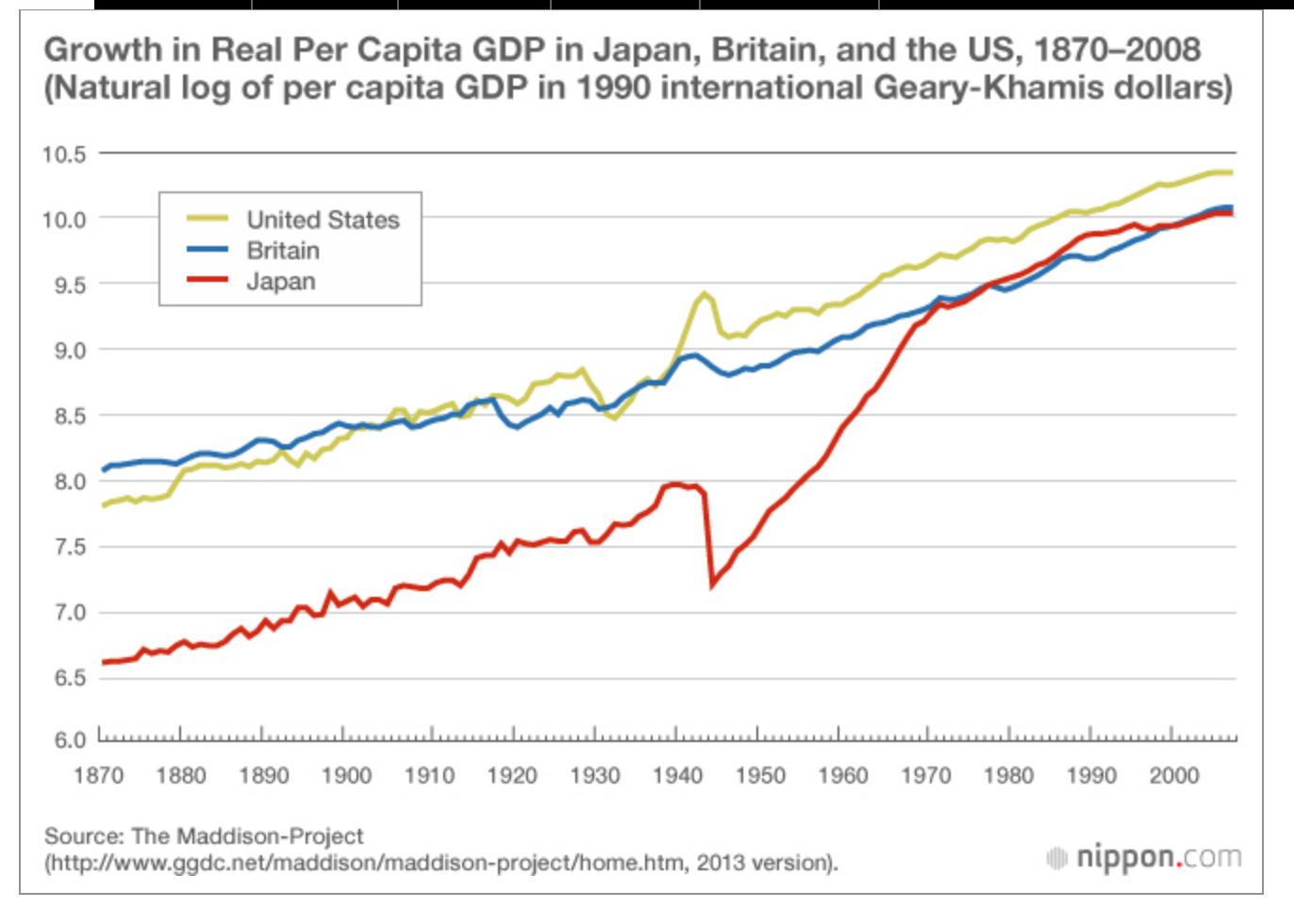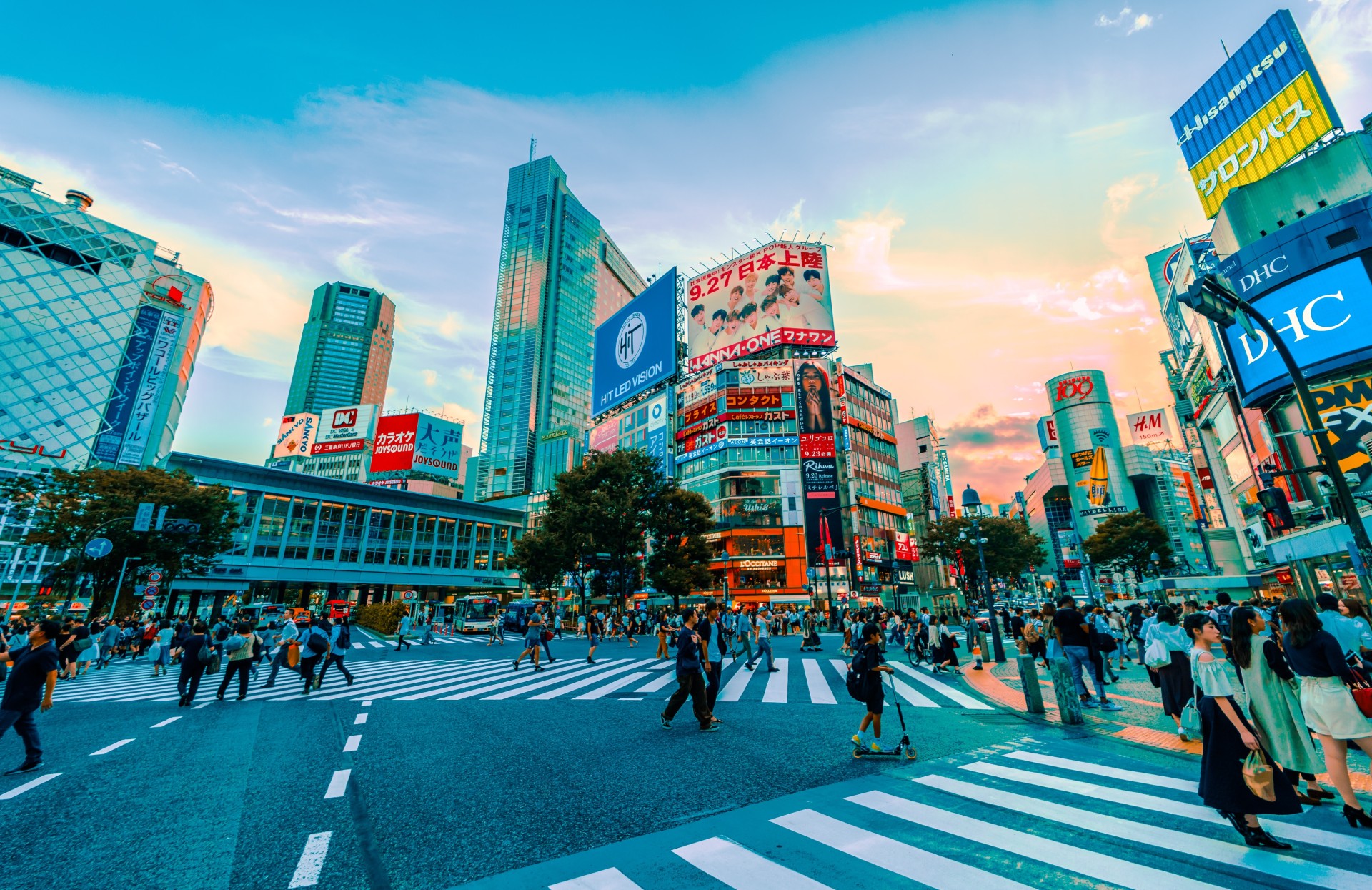6. Economic miracle and its impact on Japan
 In the decades following the Occupation, Japan experienced an 'economic miracle'. By the end of the 1960s, Japan had become the third largest economy after the US and USSR. This had a profound impact not only on the wealth of ordinary Japanese, but also on their living standards and their work culture.
In the decades following the Occupation, Japan experienced an 'economic miracle'. By the end of the 1960s, Japan had become the third largest economy after the US and USSR. This had a profound impact not only on the wealth of ordinary Japanese, but also on their living standards and their work culture.
Guiding questions:
Why did Japan experience an 'economic miracle'?
What is the historiography regarding the Economic Miracle?
What has the impact of the economic miracle on Japanese society and culture?
Why did Japan experience an 'economic miracle'?
'More than any country, Japan was the beneficiary of the postwar international order'.
Kenneth Pyle, pg 244
'No single explanation can account adequately for Japan's postwar resurgence. More plausibly, as happened in the Meiji era, a number of factors came together to push the economic trend lines upward'. James L. McClain, pg 581

https://www.nippon.com/en/in-depth/a04003/
Starter:
What is the message of the graph above regarding the development of Japan's economy compared to those of other countries in the years 1870 to 1990?
When Japan surrendered to the Allies in August 1945, its economy lay in ruins. It took a decade before the levels of economic output that had existed before the outbreak of the war were once again achieved. And then what became known as 'the economic miracle' began with growth rates in Japan continuing at an annual average rate of some 10 per cent until the early 1970s. By 1968, Japan had surpassed West Germany in overall growth of national product to rank as the third largest economy in the world.
Task One
ATL: Thinking skills
What factors, according to Kenneth Pyle, allowed Japan to benefit from the postwar international order?
Japan made its way in the post-World War II era by relentlessly pursuing its own narrowly defined self-interest and by frustrating all attempts to engage it in collective security arrangements. This strategy and the underlying foreign policy were a brilliant success because Japan could rely on the United States to guarantee its scrutiny and maintain the international order of free trade, leaving Japan free to follow policies of economic nationalism.
(The Making of Modern Japan, pg 244)
Task Two
ATL: Thinking skills
Watch the following video on the economic miracle and answer these questions:
- What were the aims of America for japan initially? What actions were taken that had an adverse impact on the economy?
- Why did American change its attitude towards Japan’s economy?
- What was the impact of the Korean War?
- What actions did the government take to restore Japan’s economy?
- What was the role of Shimomura?
- What other factors are given for Japan’s recovery?
- What was the impact of the recovery on the Japanese people?
Task Two
ATL: Thinking Skills
As the video indicates, many factors played a role in this 'economic miracle'. Read through the bullet points below and do further research on each factor before you do the next task.
The Korean War: This created a boom in textiles, cement, and iron and steel industries which helped kick-start the Japanese economy
Extensive technological innovation: the impact of the carpet bombing that had taken place at the end of the Second World War, and the destruction that this had caused, meant that much of Japan's industrial capacity had to be replaced. Foreign help was sought but the Japanese avoided foreign control of Japanese business. They also improved on the technology that they had imported which enhanced Japan's international competitiveness
A high rate of investment: A large share of GNP was spent on new plants and equipment which thus allowed additional growth. Much money was spent on export industries and capital goods industries where there was a strong demand. Investment was also helped by the fact that the Japanese had a high rate of savings (18% of disposable income as opposed to 7/8% in America)
A good supply of highly motivated and well-educated labour: This was the result of a 1960s post war baby boom and the return of millions of Japanese from overseas. As a consequence, wages did not rise rapidly and did not outstrip productivity. There was also an absence of lengthy strikes.
The international economic situation: the post war reduction in trade restrictions caused a rapid expansion of world trade and, between 1953 to 1965, Japanese exports grew an average of 17 per cent each year. The availability of industrial raw materials and fuel at low prices also helped.
The State's industrial policy: Japan focused on producing goods that were in demand both at home and abroad such as transistor radios, cameras, colour televisions (abandoning its former textile exports). This meant a rejection of the economic role envisaged for Japan by The Occupation. Declining industries were given guidance on how to diversify into other economic activities.
Government economic policies: The government encouraged growth such measures as tax concessions for the corporate sector, loans to leading industries and state spending on such overheads as railways, roads, and electrical power that were of direct benefit to industry and commerce. There was also 'administrative guidance' by the Ministry of International Trade and Industry (MITI). This guidance involved promoting technical change and encouraging efficiency. (though Ann Waswo points out that there were many Japanese entrepreneurs who set up industries and changes on their own initiative without government direction - see below)
Dynamic capitalists and industrialists: With many big businessmen forced into early retirement due to being tainted with the Japanese war effort, a younger generation of mid-level managerial personnel were thrust into positions of authority in many enterprises' they took a dynamic approach to adapting production for peacetime purposes and investing in new technology.
A low defense budget: Less than 1% was spent on defense so this freed up resources for economic investment. As Ann Waswo writes, 'That Japan's neighbors - or, for that matter, the United States - would have tolerated greater Japanese spending on defense during these years is highly unlikely, but no such attempt was made. Instead Japan maintained a 'low', deferential posture in regional and international affairs and concentrated its resources on economic development.' (Modern Japanese Society, pg 109)
'A widespread commitment to redemption for themselves and for the nation through hard work in the cause of economic growth' : (Waswo, pg 110) The Japanese people switched their enthusiasm for the army and navy to making sure that there was a growth of GDP giving rise to what some commentators called a 'GNP nationalism'. Mitsubishi Corporation boss Fujino Chijiro summarised the contribution of the Japanese people: 'We, the industry and the country, have had the correct combination of labour, know-how, raw material available from abroad and sales ability. Drive is also very important. We work hard.'
Task Three
ATL: Self-management skills
Group the points above under the headings: economic, political, social and military.
Add extra points from the video above and/or that you have researched.
(This could also be done as a mind map or as a more detailed infographic to show links between the various points)
In pairs, discuss which factors you consider to be most significant in creating the economic miracle in Japan.
Task Two
ATL: Thinking skills
What reasons are given in the following sources as contributing factors for the Japanese economic miracle?
Source A
From Japan Emerges, by Stephen Warshaw
'..the Japanese miracle is..seen as an event based upon a unique culture, one much more difficult to achieve in other countries. China and Indochina, for example, lacked Japan's unity during the past forty years and so lost substantial economic opportunities. In the West, the United States and great Britain have borne large defense budgets. They also have traditions of individualism which are unknown in Japan. Their people would be unlikely to surrender as much of themselves or to permit the concentrations of power that the Japanese do. Few Westerners would be willing to accept the Japanese way of life to gain greater prosperity...'
Source B
From A Modern History: Japan, James L McClain, pg 582
'..as happened in the Meiji era, a number of factors came together to push the economic trend lines upward. Beyond the favourable international situation and the relationship with the United States, the legacy of the past projected an undeniable importance. A tradition of entrepreneurship, a labor pool filled with talented managers and blue-collar workers, and the experience of organising successful large-sale enterprises all stood the country in good stead in the postwar era. The government helped by providing political stability, repairing and modernizing the country's infrastructure of transportation and communication, stabilizing the banking and currency systems, and crafting policies and bureaucratic agencies that promoted high-speed growth. Meanwhile, workers took up their tools and learned new skills, while corporate magnates and more humble entrepreneurs rebuilt old companies and invented new ones, adapted technology, and maneuvered to take advantage of domestic and international opportunities'.
2. What is the historiography regarding the Economic Miracle?
Historians differ over which of the factors above were the most significant in causing the Economic miracle; conclusions on this subject have also changed over time.
Task One
ATL: Thinking skills
Read this article from Harvard Business Review, entitled Reinterpreting the Japanese Economic Miracle.
What are the conclusions of this article regarding the reasons for the Japanese Economic Miracle?
Several areas have caused controversy amongst historians:
How important was the relationship between workers and companies in explaining the economic miracle?
Kenneth Pyle mentions the 'uniqueness of Japanese corporate culture..and labour management relations' as being a contributing factor to the economic growth of Japan. However S Garon and W. Dean Kinzley emphasise that phenomena such as company loyalty and harmonious labour relations were not necessarily the produce of innate Japanese cultural values. Official propaganda and the initiatives of labour bureaucrats designed to promote consensus and cooperative labour relations during the 1920s and 1930s were the result of conscious political decisions to safeguard stability at a time of increasing labour turmoil.
It must also be remembered that lifetime employment, welfare benefits etc only applied to larger companies and only then to regular employees. Many were temporary or day workers. Many Japanese workers (in fact the majority) worked for much smaller companies and did not therefore enjoy the same privileges as their counterparts in the big companies.
Furthermore Friedman argues that it was the expansion of smaller producers who adopted flexible manufacturing strategies that contributed to the high-speed growth in the 1960s and 1970s
How important was the MITI in contributing to the economic miracle?
The orthodox view here is represented by Chalmers Johnson who argues that the Japan's post war economy was guided by the bureaucratic state as represented by the MITI.
Other historians have emphasized the other factors: technology, high rates of savings, high level of education, favourable world climate etc as being more important. Patrick and Rosovsky emphasize the role of private business and point out in that in some cases the MITI actually held back technological advance. It also seems that its guidelines were ignored by many companies.
How important were reparations and Japan's trading agreements with Southeast Asian countries?
Paul Bailey points out that another important factor in Japan's economic recovery was the reparations agreements with Southeast Asian countries which were frequently tied to economic aid and loan programmes. Japan gave out millions in reparations and economic aid to Burma, Vietnam, Indonesia, the Philippines, South Vietnam, Laos, Cambodia, Malaysia and South Korea. Since economic aid often involved the purchase of Japanese manufactures, these agreements considerably stimulated the steel, shipbuilding and electric goods industries. By 1969, Southeast Asia was receiving 83% of Japan's bilateral aid flows and 79% of the total transfer of private capital goods from Japan. The end of the 1960s saw Japan as either the first or second trading partner of every country in the region.
Task Two
ATL: Thinking skills
Use all of the information above, including the historiography to plan the following essay:
Examine the reasons for Japan's post-war economic recovery and expansion
(Go to 7. Japan 1920 to 1990: Essay frames and writing exercises for an essay frame on this question)
3. What has the impact of the economic miracle on Japanese society and culture?

As Japan’s economy grew rapidly, it became part of the globalized world. Japanese goods spread to all countries, as did its food and aspects of its culture.
Within Japan, the economic miracle and globalization benefited ordinary Japanese as they became more affluent. From the early 1970s through to the early 1980s, more than 90% of Japanese identified themselves as belonging to the the ‘middle class’. Japanese society became consumer driven with most Japanese seeking to own the most up-to -date material goods.
However, despite standardization of education, mass culture and a growth in standard of living, divisions in society remained and problems developed.
James McClain writes: ‘Few would deny that living standards in general had improved in the postwar decades or that beneficiaries far outnumbered the victims of high-speed growth. Nevertheless, overcrowding, long commutes between home and office, and undersized housing continued to plague urban dwellers. Moreover, unbridled industrialization had turned japan into ‘a polluters’ paradise’ (A Modern History, pg 593)
The later point was emphasized by a Kyushu fisherman who was arrested for demonstrating against the proposed construction of yet another petrochemical works:
‘Japan is an octopus eating its own legs. Our main wealth has always been in our oceans, rivers and good farmland and in the spirit of our people…In a race for more and more economic growth we are poisoning our soil, water and air, as well as ourselves. We are Number 3 in the world in Gross National Product, but we are Number 1 in Gross National Pollution’ (quoted in Richard Tames, A Travellers’s history of Japan, pg 194
Task One
ATL: Research and presentation skills
In small groups, investigate the impact of Japan’s economic growth and globalization on society and culture under these themes:
- The work place and 'corporate culture'
- Pollution
- Roles of women
- Traditional Japanese values
- Standard of living
- The education system
Each group should produce a brief presentation for the rest of the class along with a set of notes (approx 2 sides of A4).
The following videos may be helpful:
Task Two
ATL: Thinking skills
Read this article from the British newspaper, The Financial Times, in 2016.
What points does this article make regarding Japan's attitude towards 'globalisation'?

 IB Docs (2) Team
IB Docs (2) Team
